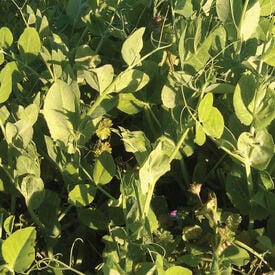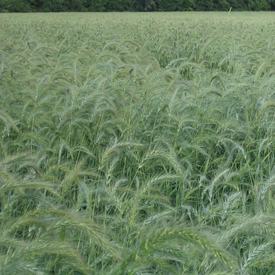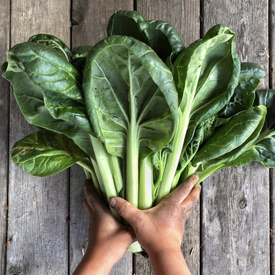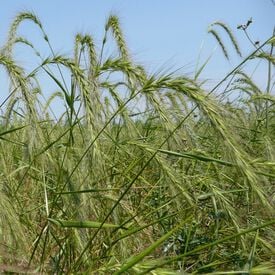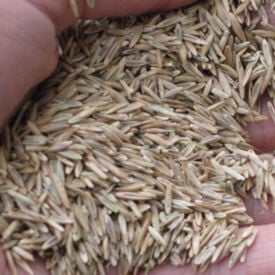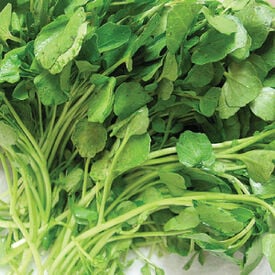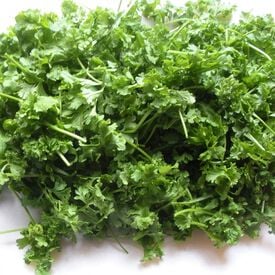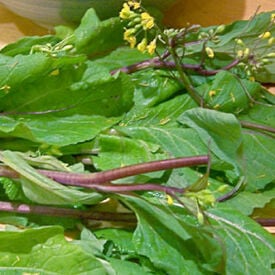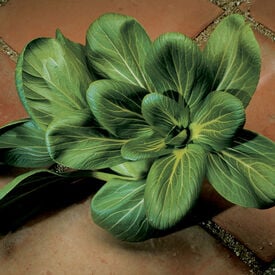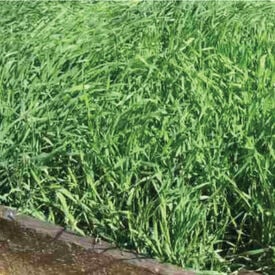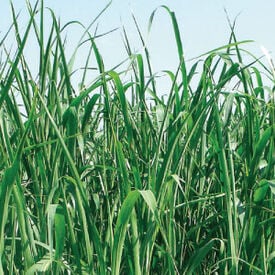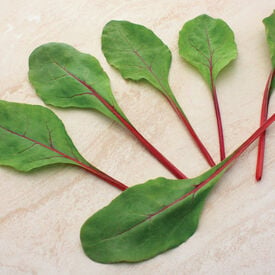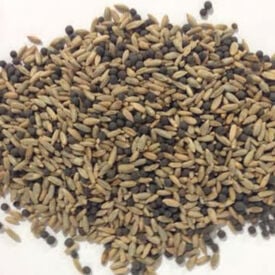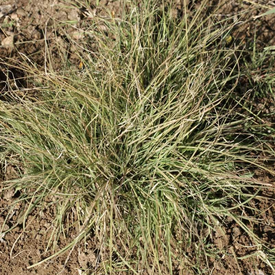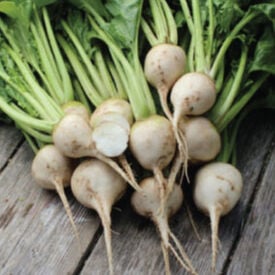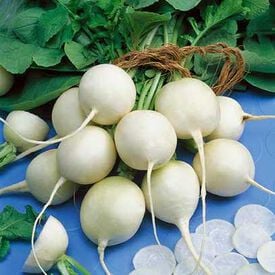The Secada Forage Pea is a relatively new forage pea that has a wide range of uses such as forage, green manure, weed suppression and more! This forage pea is highly palatable, self-climbing and with high dry matter yields. A fast growing, cool-season annual legume, the Secada Forage Pea performs very well during the fall, winter and spring in Southern states. In more northern climes, an early spring plant will give high dry matter yields of excellent forage. Uses: Chicken Forage, Deer Attractant, Forage, Green Manure, Nitrogen Fixation, No Till, Organic Matter (Biomass), Weed Suppression
The Canada Wildrye is a cool-season bunchgrass grain variety that can be found throughout Canada and the U.S. except in the southeastern states. It is typically found in prairies, open woods, fields and disturbed sites. This grain tends to be short-lived but provides quick stabilization for erosion control seedings, and it makes a good, early successional component of prairie mixtures. The Canada Wildrye provides quality forage for livestock and wildlife.
Tatsoi is a flavorful and versatile Asian green that thrives in cooler weather, making it a popular choice for spring and fall plantings. Known for its glossy, dark green, spoon-shaped leaves, Tatsoi has a mild, mustard-like flavor with a slight sweetness, making it a great addition to salads, stir-fries, or as a garnish. Tatsoi seeds produce compact, rosette-shaped plants that grow quickly and are easy to harvest, often within 30 to 40 days. This hardy green is also appreciated for its high nutritional value, offering a rich source of vitamins A, C, and K, as well as calcium and iron. Its adaptability and fast-growing nature make Tatsoi a favorite among both commercial growers and home gardeners looking to add a nutrient-dense and visually appealing crop to their gardens.
The Mandan Wildrye Grass is a fast growing, cool-season, perennial bunch-grass that is a great choice for erosion control. It can be planted early or late fall, but for best results, Mandan Wildrye should be planted in the spring. This hardy grass performs well on most soil types. The Mandan Wildrye produces and brown seed head and can grow up to 4 feet! Uses: Erosion Control, Forage, Green Manure, Nitrogen Scavenger, No Till, Organic Matter (Biomass), Weed suppression
The Packer Forage Pea, or Canadian field pea, is a cool-season legume that is used for cover crops, wildlife and winter grazing! This annual legume has good nitrogen-fixing capabilities. The Packer Forage Pea is a low-growing, viny legume which has been shown to fix over 200 pounds of nitrogen per acre per year. Uses: Chicken Forage, Deer Attractant, Forage, Green Manure, Nitrogen Fixation, No Till, Organic Matter (Biomass), Weed Suppression
The Frontier Grazer Rye is a grain that makes a great cover crop to prevent erosion and build up organic matter in the soil! Plant this variety early to late fall; in mild climates fall through early spring. The best choice for fast, cool-season germination. The Frontier Grazer Rye captures soil nutrients in the fall to release in spring when worked into the soil. Uses: Erosion Control, Green Manure, Nitrogen Scavenger, No Till, Organic Matter (Biomass), Weed Suppression<
The Upland Cress is a highly nutritious aquatic herb. This cress is a slow to bolt green, but once it's established it will take off and have a long growing season! Upland's 6-8" rosettes of dark green, glossy, rounded leaves are very tasty and refreshing. Upland is very similar to watercress, but is much easier to grow!
The Curled Cress is a highly nutritious aquatic green. This cress has been cultivated for hundreds of years. This peppery and pungent cress has the same tangy flavor as watercress, as they are of the same botanical family. Curled cress is great for seed sprouting or microgreen growing!
The Hon Tsai Tai has deep purple tender stalks with a slight mustard flavor that is great in different salads or cooked into stir fries! Its green leaves have petite florets that are best harvested right before the bright yellow blossoms open. Hon Tsa Tai is best grown in mid to late summer.
Feng Qing Choi cabbage is a slow bolting Mei Qing Choi type with good plant size and dark leaf color. This variety has excellent holding ability and uniformity.
The Elbon Rye is a grain that is the best choice for fast, cool-season germination that prevents erosion and builds organic matter in the soil! Plant this variety early to late fall; in mild climates fall through early spring. This grain captures soil nutrients in the fall to release in spring when worked into the soil. The Elbon Rye can reach up to 5 feet! Cereal Rye (Secale cereale L.): Cool season, grass, Annual or perennial, Upright plant growth, Crude protein: straw 4%, grain 14%, C:N ratio: 40-48, Self pollinator (wind) Uses: Erosion Control, Green Manure, Nitrogen Scavenger, No Till, Organic Matter (Biomass), Weed suppression
The Piper Sudangrass is a great catch crop for excess nitrogen that produces heavy amounts of organic matter and suppresses weeds. This grass grows quickly at heights up to 7 feet. The Piper Sudangrass is great for livestock forage, but should be grazed only when mature and never after a frost as it turns toxic. Uses: Erosion Control, Green Manure, Nitrogen Scavenger, No Till, Organic Matter (Biomass), Weed Suppression
Ruby Fresh hybrid swiss chard is perfect for market growers. Perfect for producing baby leaf greens that have bright red petioles with a well-defined venation. It has thick round to oval leaves. Ruby Fresh is a great choice for baby leaf or spring mix growers.
Great way to fix nitrogen and add organic matter to the soil! A great mix of grass and legume cover crops. Hairy Vetch works well for nitrogen fixation while Rye adds organic matter and protects the less hardy vetch from winter damage. If planted in fall it comes back early spring with heavy growth. Cut right after it flowers and spring and till into soil. (75% Winter Rye / 25% Hairy Vetch) Seed Coverage: - 5 lbs covers 2,000-4,000 sqaure feet - 100 lbs covers 1-2 acres Uses: Deer Attractant, Green Manure, Nitrogen Fixation, No Till, Organic Matter (Biomass), Weed Suppression
Spring Raab broccoli, also known as rapini, has roots in Mediterranean cuisine, particularly in Italy, where it has been cultivated for centuries. This unique vegetable is characterized by its slender, green stalks topped with small yellow flowers and dark green leaves, which are edible and packed with nutrients. The flavor of Spring Raab is distinctively bitter and nutty, which softens with cooking, making it a versatile addition to dishes like stir-fries and pasta. Harvesting typically occurs 40-60 days after planting, ideally before the flowers fully open for optimal taste. This cool-season crop thrives in well-drained soil and prefers cooler temperatures, making it perfect for early spring or fall planting. Its rapid growth and ability to produce multiple harvests make Spring Raab a favorite among gardeners, while its rich vitamin content adds to its appeal for health-conscious cooks.
The Buffalo Grass is a warm-season grass that is the predominant component of the shortgrass prairies of the Great Plains. Once established, it is extremely drought tolerant and tough. It can be used as a xeriscape lawn grass for water conservation, and it is a common component in range mixtures. White Tailed Deer, Bison and Prairie Dogs utilize it for forage, and it is a larval host for the Green Skipper. Plants are stoloniferous and can invade flower beds if an edging or barrier is not used.
The White Albino beet plants produce good yields of very sweet white beets. The beets are white and will never stain again! This gourmet beet is ideal for boiling, pickling, baking, and freezing.
The Philadelphia White Box Radish is a tiny, round white variety that is the perfect choice for a container or garden bed! This radish might be small, but it has a big spicy flavor and crispy texture that is wonderful when eaten fresh. The Philadelphia White Box can enjoyed by both home growers or market growers. This variety is a heavy yielder of little, uniform radishes!
